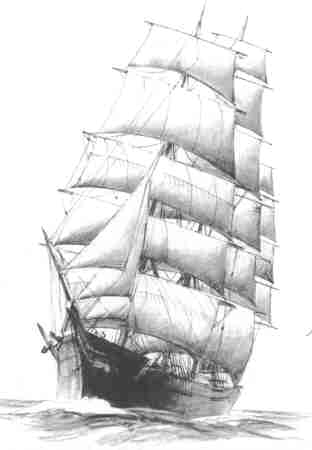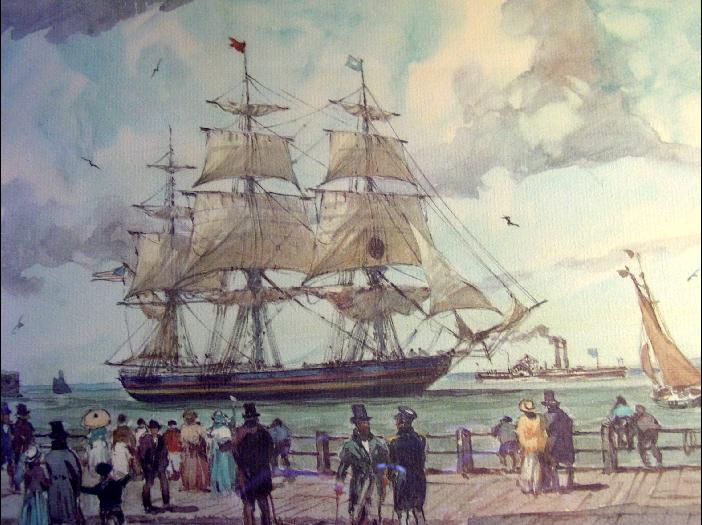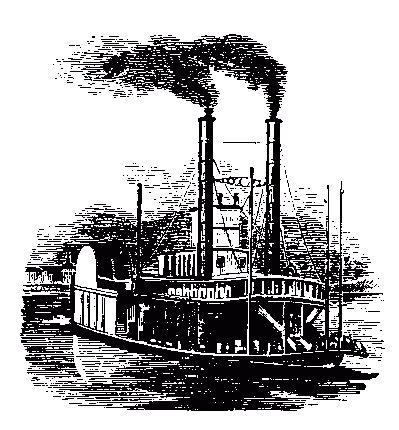Ellen Sheffield
29 June 1826 – 15 May 1854
There was once a young dressmaker in Wellingbourough, Northamptonshire,
England by the name of Ellen Sheffield. Ellen was born in Wellingbourough
on June 26, 1826. She was the second of four children in the family of
Peter and Charollett Mundin Sheffield of Wellingbourough.

At the age of fifteen she joined the Church of Jesus Christ of Latter-day Saints, being baptized in September of 1841. Her older brother, John, had been baptized over a year earlier. In her association with other members of the Church she became acquainted with another young convert from Wellingbourough, a shoemaker by the name of Samule Barson who was baptized in 1844. Samuel, the of Samuel Barson Sr. and Jane Rixon, was born in Wellingbourough on July 15, 1825. In time, Ellen and Peter were married on December 26, 1846 and made their home in Wellingbourough.
Their first child, Orson Pratt was born on October 15, 1847. Peter was born on February 12, 1849 in Wellingbourough. Sadly, Orson died four months after Peter was born. John was born in 1850, Sarah Ellen on February 18, 1851, and Mary Ann on February 9, 1852. Sarah died on June 3, 1852.
Being a Mormon in England during those days was not a very popular thing to be. Persecution was very severe and Samuel and Ellen longed to immigrate to Utah and unite themselves with the main body of the Church. They worked and saved everything they could to prepare for the long journey.
As
England disappeared in the distance the sweet singing ceased and many
began to feel seasick. All that night the wind howled fiercely; the
sea was rough; the ship was driven from its course. The next morning
the sea was still rough and the wind was blowing. During this day the
Windermere sailed by the remains of a wrecked vessel. Masts, sails
and other fragments were floating around. Likely, a few hours
previous many despairing souls had tenaciously clung to these same
objects for relief that never came. All had been consigned to a
watery grave for no signs of life remained and the rolling waves
swept over the bodies while the wind howled its tribute for the dead.
Life
on the Windermere was growing monotonous for its accommodations were
inadequate for so many passengers. Some began to recover from
seasickness, but many were still ill and some were confined to their
berths.
On
the 12th day of March, at about seven or eight o'clock in the
morning, an exceedingly fierce storm arose. The masts cracked and the
sails were torn in pieces. The captain of the Windermere expressed
fears that the ship could not stand so heavy a sea, and in speaking
with Daniel Garn, the president of the Saints on board, said, "I
am afraid the ship cannot stand this storm, Mr. Garn, if there be a
God, as your people say there is, you had better talk to Him if He
will hear you. I have done all that I can for the ship and I am
afraid with all that can be done she will go down."
Elder
Garn went to the Elders, who presided over the nine wards in the
ship, and requested them to get all the saints on board and to fast,
and call a prayer meeting to be held in each ward at 10 a.m. and pray
that they might be delivered from the danger. The waves were lashed
with white foam, the storm continued in all its fury, but precisely
at 10 a.m. the prayer meeting commenced and such a prayer meeting few
have ever seen.
The
wind roared like a hurricane. Sail after sail was torn to shreds and
lost. The waves were very large and as far as the eye could see,
seemed to be one angry mass of rolling white foam. The hatches were
fastened down. This awful storm lasted about eighteen hours, then
abated a little, but it was stormy from the 8th of March until the
18th. On
the 14th of March, which was two days after this terrible storm,
smallpox broke out. Forty in all, came down with it. Three days later
the ship caught fire in the galley. At this time they had not seen
land for three weeks; when the cry of "Fire! The ship is on
fire," rang throughout the vessel, wild excitement and
consternation prevailed everywhere. The sailors plied water freely,
all the water buckets on board were brought into use and soon the
fire was under control.
As the smallpox epidemic spread, ten people died from it. The funeral
services were very impressive; a funeral at sea is the most
melancholy and solemn scene perhaps ever witnessed, especially when
the sea is calm. A stillness like that of death prevailed with us
while an old sailor, at intervals, would imitate the doleful tolling
of the bell of some old church, such as heard in some parts of
England. Funerals were becoming frequent. About
the time the Windermere was six weeks out of Liverpool the passengers
had not seen land from the time they had entered the Atlantic. The
days were generally mild and the weather very pleasant. The sun set
and the bright, pale moon seemed to be directly overhead. On the 8th
day of April they came in sight of the Island of Cuba.
After
facing a terrible storm, a smallpox epidemic, and a fire aboard the
ship, another fearful calamity threatened them. The sea and wind
became very still. Without wind, the ship had no means of propulsion,
only to drift with the current. The fresh water supply was getting
short, and the store of provisions was falling. The passengers were
limited to one hard, small biscuit for a day’s rations.
On
the morning of the 20th of April the ship entered the mouth of the
Mississippi River. The passengers were glad to look upon the
plantations along the banks of the river than the great strong
surging waves of the Atlantic which they had been through. The
Windermere arrived at New Orleans 23 April, 1954. Samuel, Ellen,
Peter, John, and Mary Ann had survived the perilous voyage, but there
was still a long ways to go.
The
main sources of this story are The Life Story of Peter Sheffield
Barson by Ann Godfrey Hansen. The voyage of the Windermere is from
the British Mission records of 1854 by Evelyn A. Sessions found on
the Craner Family website, www.craner.org.
With hearts full of faith, they embarked on what would prove to be a long
and arduous journey. On Wednesday, February 22, 1854, the ship
Windermere sailed from Liverpool with 460 passengers, all Latter-day
Saints; including Samuel age twenty eight; Ellen age twenty seven,
Peter age five, John age four, and Mary Ann age two. As the vessel
started in motion, the songs of Zion, blending in soul-inspiring
harmony, thrilled the souls of the passengers and their many friends
and families standing on the shore gazing at the departed vessel,
shouting farewell, goodbye with eyes streaming with tears. 
The ship rolled from side to side. The large boxes which were tied with
ropes under the berths broke loose with pots, pans and kettles and
rolled with terrible force on each side of the vessel. Although the
prayers were fervent and earnest, as the pleadings of poor souls
brought face to face with danger and death, they ceased their prayers
to watch and dodge the untied boxes, and great confusion prevailed
for some time.

The Captain sent some sailors in a small boat to intercept a ship that
was passing in the hopes of getting more provisions, but they failed.
The Windermere now passed the western points of the Island of Cuba.
The passengers had a good view of the lighthouse located on the most
western point. The Gulf of Mexico was before them. But at the end of
five weeks favorable winds set in and the ship made 1,000 miles in
four days.

After a few days in New Orleans, the Barson family continued
their journey and traveled up the Mississippi River by steamboat.
While sailing up the river, cholera broke out. Ellen Sheffield Barson
was stricken with the disease and died on May 15, 1854 at the age of
twenty seven. At the next stopping place, her body was taken ashore
and she was buried on the banks of the Mississippi River. With
saddened hearts, Samuel and his three little children journeyed on.
